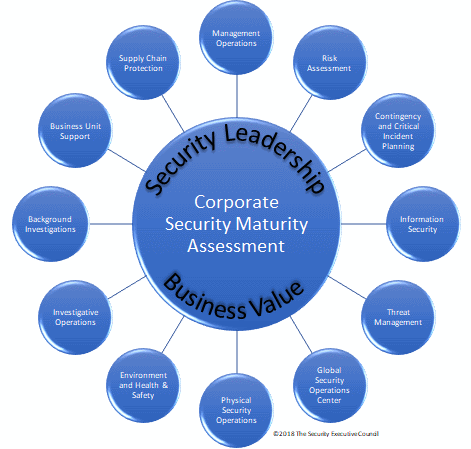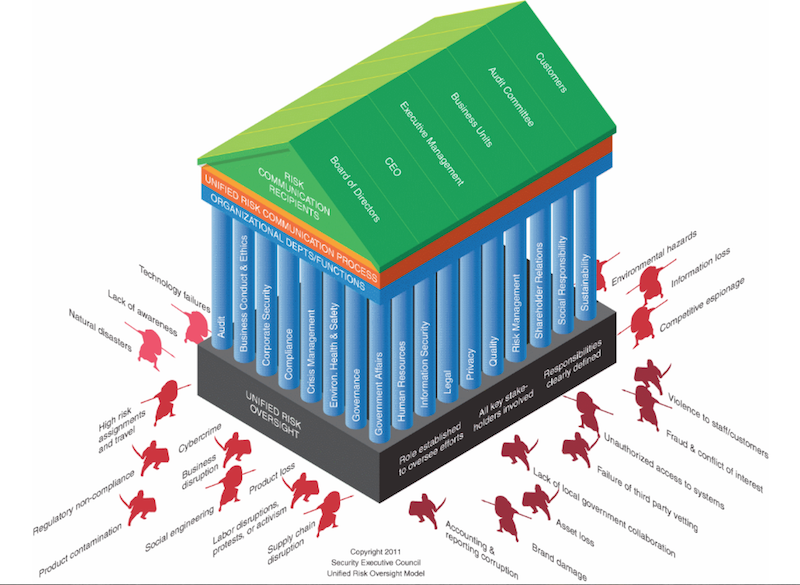Grasping Corporate Security: Proven Tips for Organization Defense
Grasping Corporate Security: Proven Tips for Organization Defense
Blog Article
From Cybersecurity to Physical Procedures: Reinforcing Company Security in a Changing Globe
By combining the toughness of both cybersecurity and physical security, firms can create an extensive defense strategy that resolves the diverse array of risks they face. In this conversation, we will check out the altering hazard landscape, the demand to integrate cybersecurity and physical protection, the implementation of multi-factor verification measures, the relevance of worker awareness and training, and the adjustment of security procedures for remote labor forces. By checking out these crucial locations, we will certainly get useful insights into how companies can strengthen their business protection in an ever-changing world.
Recognizing the Transforming Danger Landscape
The progressing nature of the contemporary world necessitates an extensive understanding of the transforming threat landscape for efficient company safety and security. In today's interconnected and electronic age, dangers to business safety have actually become a lot more complicated and sophisticated. As modern technology advancements and businesses become increasingly reliant on electronic facilities, the potential for cyberattacks, information breaches, and other safety and security breaches has actually considerably enhanced. It is critical for companies to remain informed and adjust their safety determines to address these advancing threats.
One key element of understanding the changing risk landscape is recognizing the different types of risks that companies encounter. Cybercriminals are constantly developing brand-new methods to manipulate susceptabilities in computer systems and networks. These dangers can range from malware and ransomware assaults to phishing frauds and social design tactics. Furthermore, physical dangers such as theft, vandalism, and corporate reconnaissance remain common problems for organizations.
Monitoring and assessing the risk landscape is necessary in order to recognize potential threats and susceptabilities. This entails remaining upgraded on the current cybersecurity fads, assessing hazard intelligence records, and conducting normal threat assessments. By comprehending the transforming risk landscape, organizations can proactively carry out suitable safety and security procedures to minimize dangers and safeguard their possessions, track record, and stakeholders.
Integrating Cybersecurity and Physical Safety
Incorporating cybersecurity and physical security is vital for detailed company protection in today's electronic and interconnected landscape. As companies increasingly rely upon modern technology and interconnected systems, the boundaries in between physical and cyber risks are coming to be obscured. To efficiently safeguard against these dangers, an alternative approach that integrates both cybersecurity and physical safety actions is necessary.
Cybersecurity concentrates on shielding digital possessions, such as networks, systems, and data, from unapproved accessibility, interruption, and theft. Physical protection, on the other hand, encompasses steps to secure physical possessions, individuals, and facilities from vulnerabilities and dangers. By incorporating these 2 domains, companies can resolve susceptabilities and threats from both physical and electronic angles, consequently improving their total security posture.
The assimilation of these 2 self-controls enables a much more thorough understanding of safety and security threats and allows a unified feedback to cases. Physical gain access to controls can be enhanced by integrating them with cybersecurity methods, such as two-factor authentication or biometric identification. Cybersecurity procedures can be complemented by physical safety and security steps, such as security electronic cameras, alarm systems, and safe and secure access factors.

Carrying Out Multi-Factor Verification Steps
As companies significantly prioritize detailed safety steps, one effective strategy is the execution of multi-factor authentication measures. Multi-factor verification (MFA) is a safety and security technique that requires users to provide several kinds of identification to access a system or application. This strategy includes an added layer of defense by incorporating something the individual understands, my response such as a password, with something they have, like a protection or a finger print token.
By executing MFA, companies can significantly boost their safety stance - corporate security. Typical password-based authentication has its limitations, as passwords can be conveniently jeopardized or failed to remember. MFA alleviates these risks by adding an added authentication variable, making it harder for unauthorized people to access to delicate details
There are numerous types of multi-factor authentication approaches available, including biometric verification, SMS-based verification codes, and equipment tokens. Organizations require to examine their particular requirements and choose the most ideal MFA remedy for their needs.
Nonetheless, the implementation of MFA should be thoroughly planned and implemented. It is vital to strike a balance in between safety and security and use to prevent customer stress and resistance. Organizations should also take into consideration prospective compatibility concerns and supply ample training and support to make here sure a smooth change.
Enhancing Staff Member Understanding and Training
To strengthen business safety and security, companies must prioritize enhancing employee understanding and training. Several security violations happen due to human error or absence of understanding.
Reliable worker recognition and training programs should cover a vast array of topics, consisting of information protection, phishing strikes, social engineering, password hygiene, and physical protection actions. These programs should be customized to the specific requirements and obligations of various worker roles within the company. Regular training sessions, simulations, and workshops can help workers create the required skills and knowledge to determine and react to protection risks efficiently.
Additionally, organizations should motivate a culture of protection recognition and provide continuous updates and tips to maintain staff members informed concerning the newest risks and reduction strategies. This can be done with internal interaction networks, such as newsletters, intranet sites, and e-mail campaigns. By fostering a security-conscious workforce, companies can dramatically decrease the likelihood of protection events and protect their useful properties from unauthorized access or compromise.

Adapting Safety And Security Measures for Remote Workforce
Adjusting business security procedures to fit a remote workforce is essential in making certain the protection of sensitive information and assets (corporate security). With the enhancing pattern of remote job, organizations need to carry out ideal protection procedures to reduce the dangers related to this new method of working
One important facet of adjusting safety steps for remote job is establishing secure communication channels. Encrypted messaging platforms and virtual personal networks (VPNs) can aid safeguard sensitive details and stop unapproved access. In addition, organizations need to enforce using solid passwords and multi-factor verification to improve the protection of remote accessibility.
One more crucial consideration is Click Here the execution of safe remote gain access to options. This includes supplying employees with safe access to corporate resources and information through digital desktop computer framework (VDI), remote desktop procedures (RDP), or cloud-based solutions. These innovations ensure that delicate details stays secured while enabling employees to perform their duties successfully.

Lastly, comprehensive safety and security understanding training is crucial for remote employees. Training sessions should cover finest methods for safely accessing and taking care of delicate details, determining and reporting phishing attempts, and maintaining the overall cybersecurity hygiene.
Verdict
In verdict, as the threat landscape proceeds to progress, it is important for organizations to enhance their safety measures both in the cyber and physical domain names. Integrating cybersecurity and physical security, carrying out multi-factor verification steps, and boosting worker awareness and training are crucial actions in the direction of achieving durable business protection.
In this discussion, we will certainly explore the transforming risk landscape, the demand to integrate cybersecurity and physical protection, the execution of multi-factor authentication procedures, the significance of staff member awareness and training, and the adaptation of protection steps for remote workforces. Cybersecurity steps can be enhanced by physical protection procedures, such as security video cameras, alarm systems, and secure accessibility points.
As companies increasingly prioritize thorough security steps, one reliable method is the application of multi-factor authentication steps.In conclusion, as the risk landscape proceeds to advance, it is essential for organizations to enhance their security determines both in the cyber and physical domain names. Incorporating cybersecurity and physical safety, applying multi-factor authentication steps, and improving staff member awareness and training are vital actions in the direction of attaining durable business protection.
Report this page